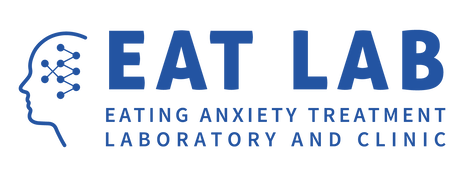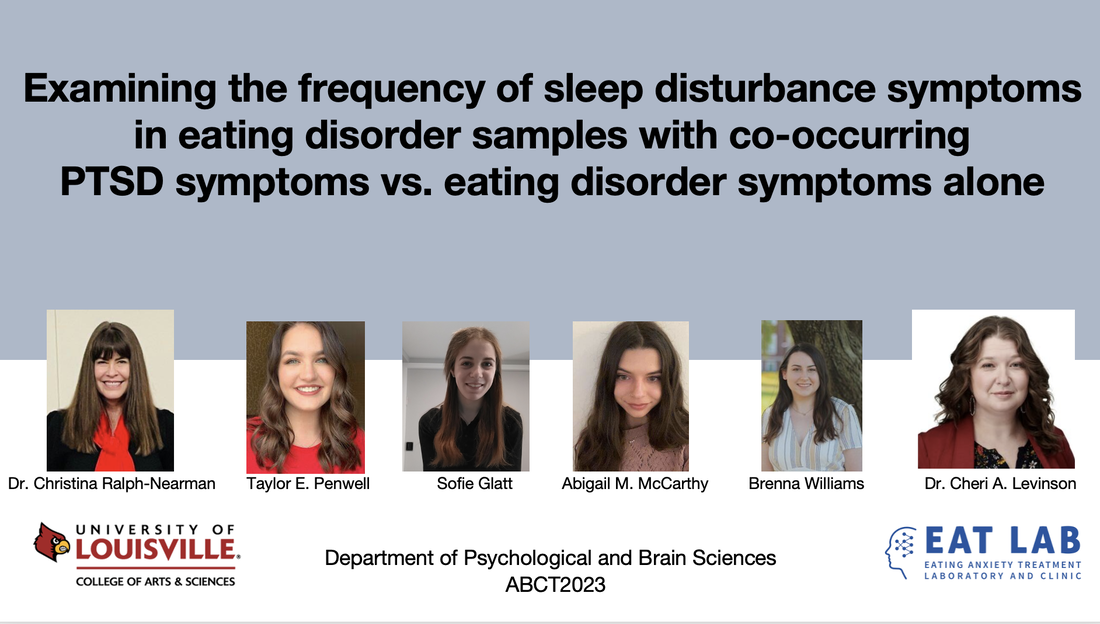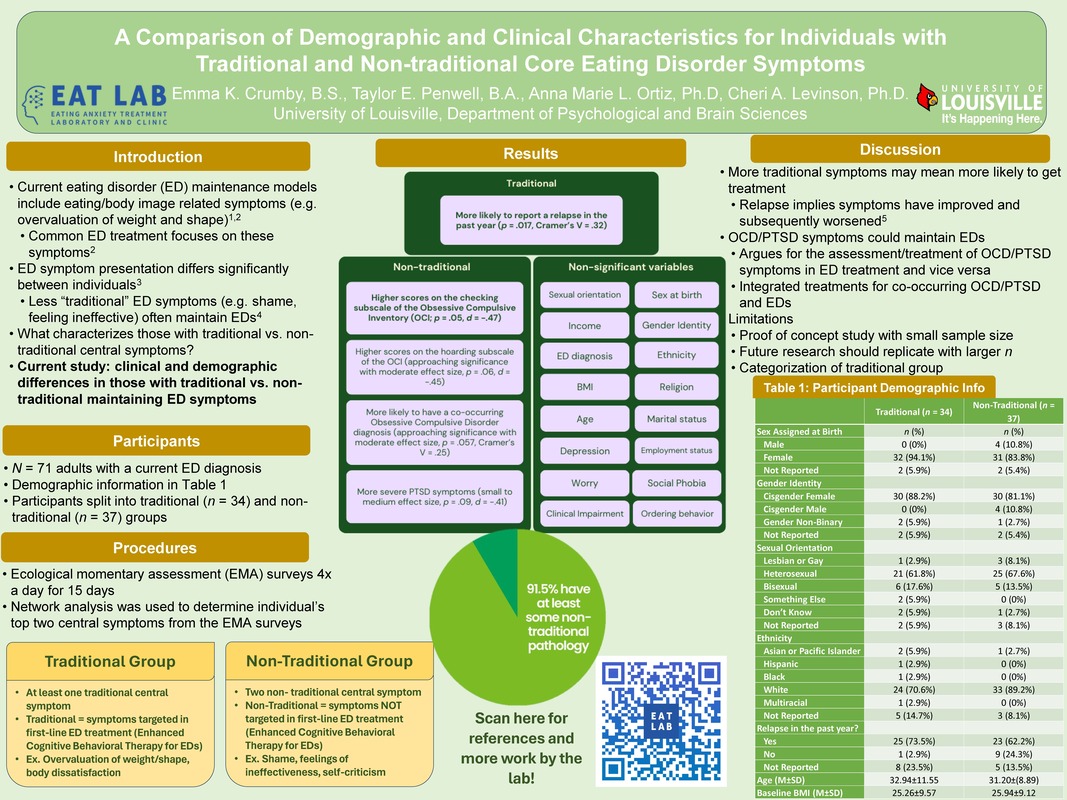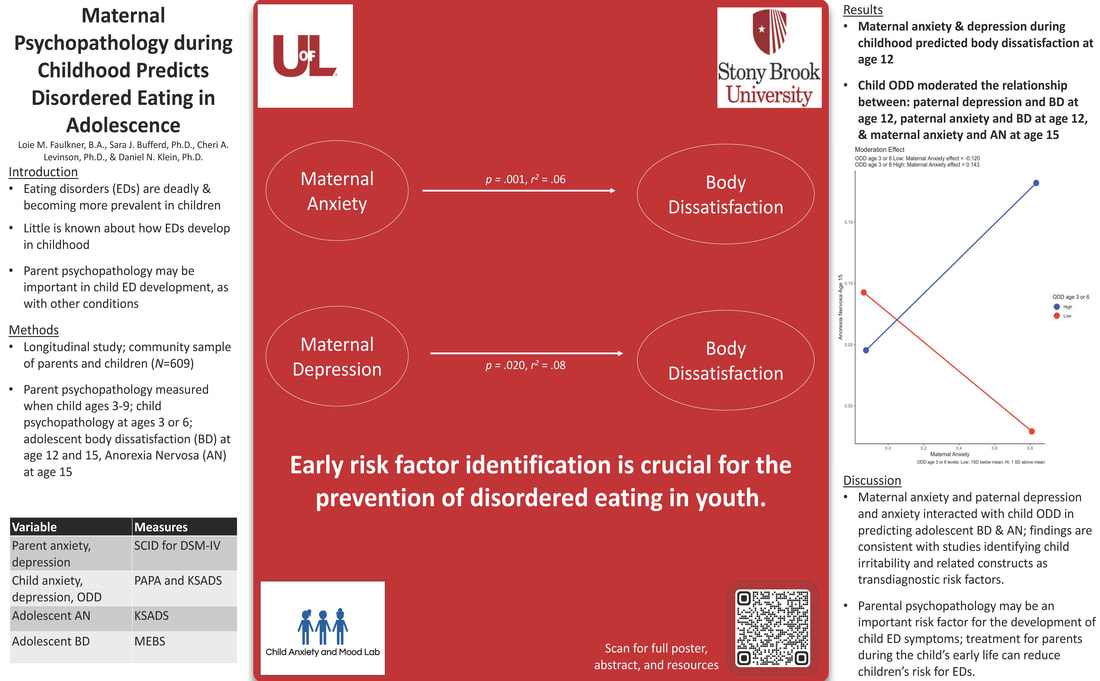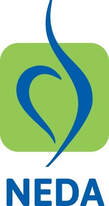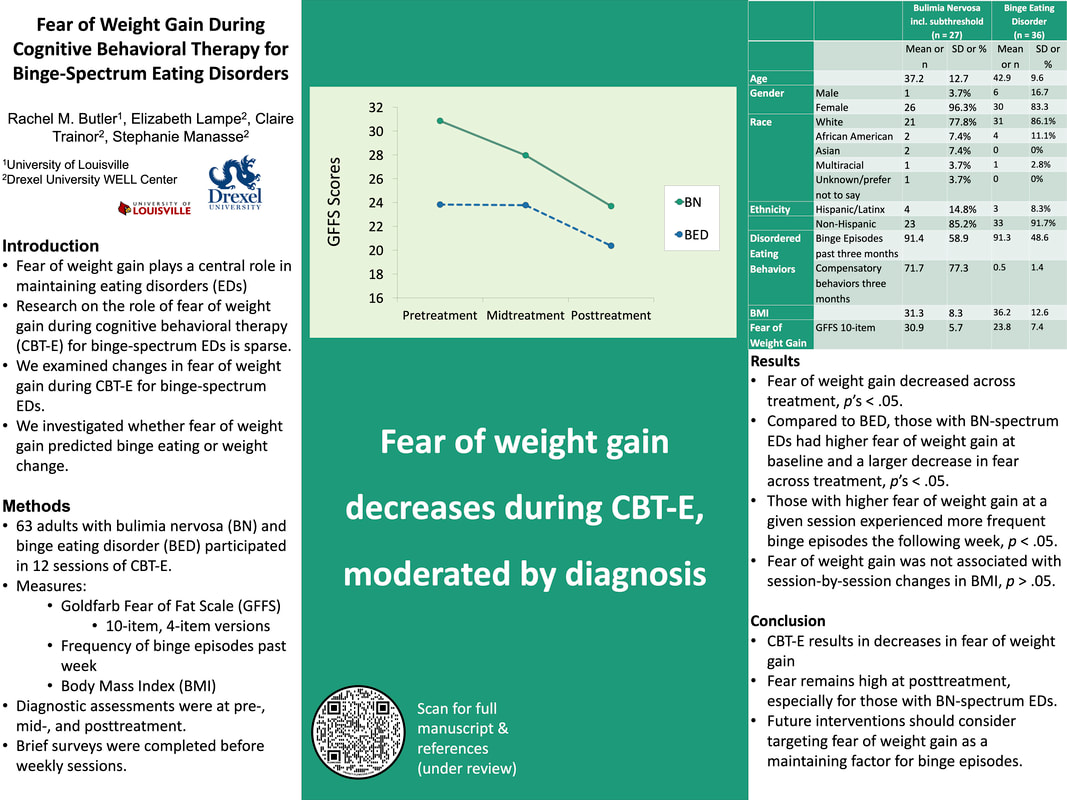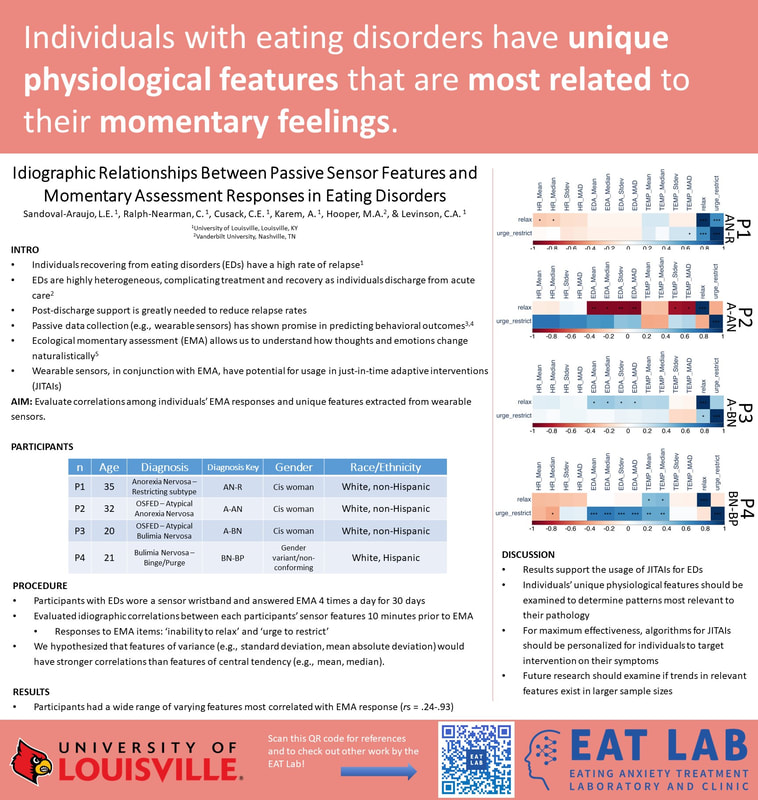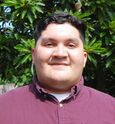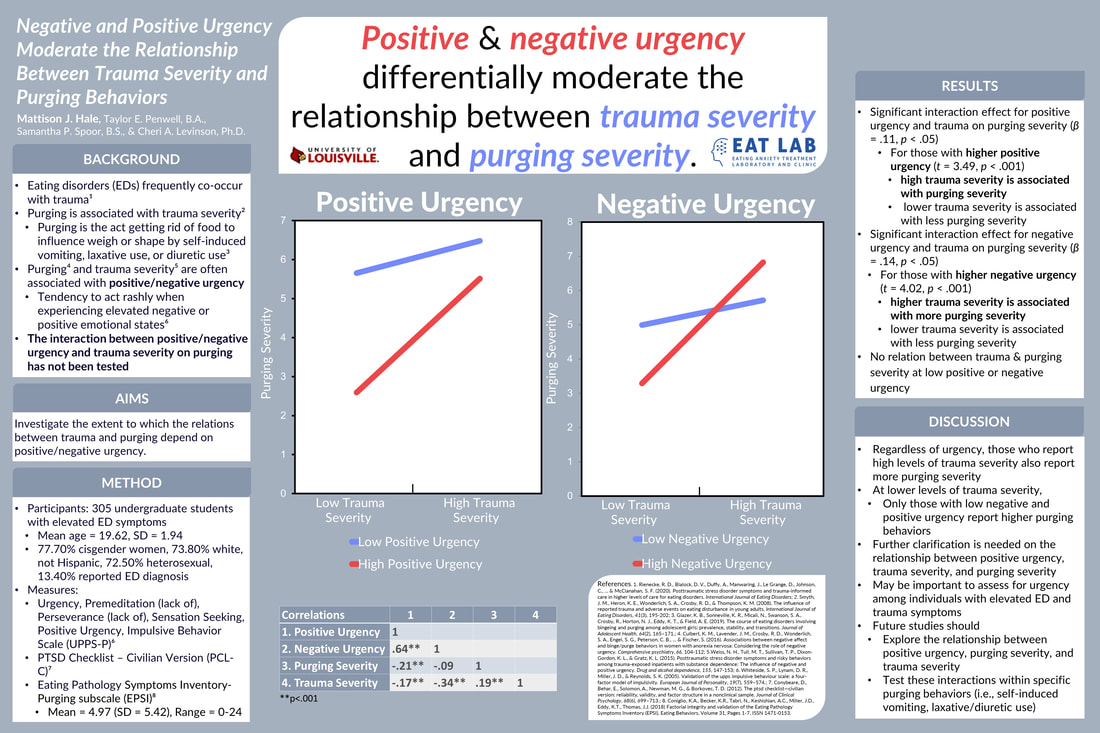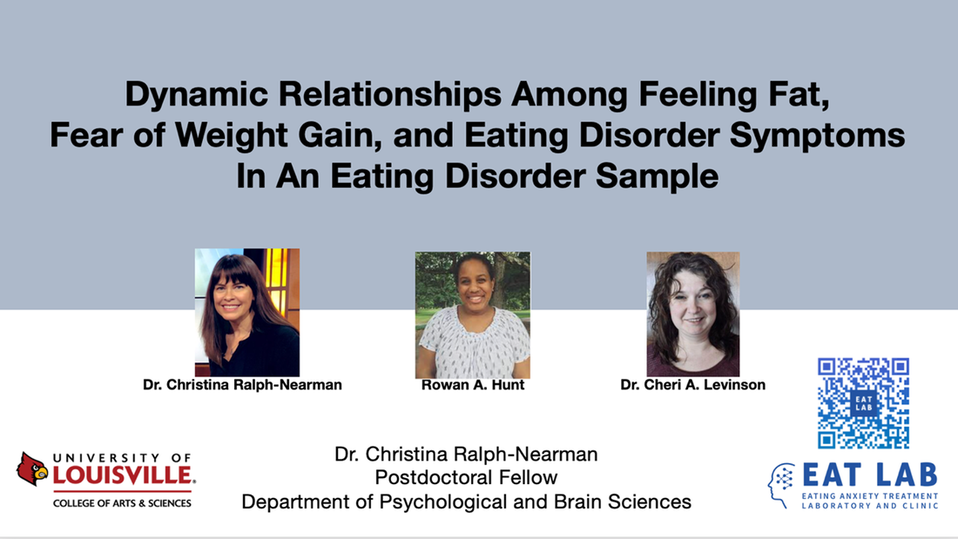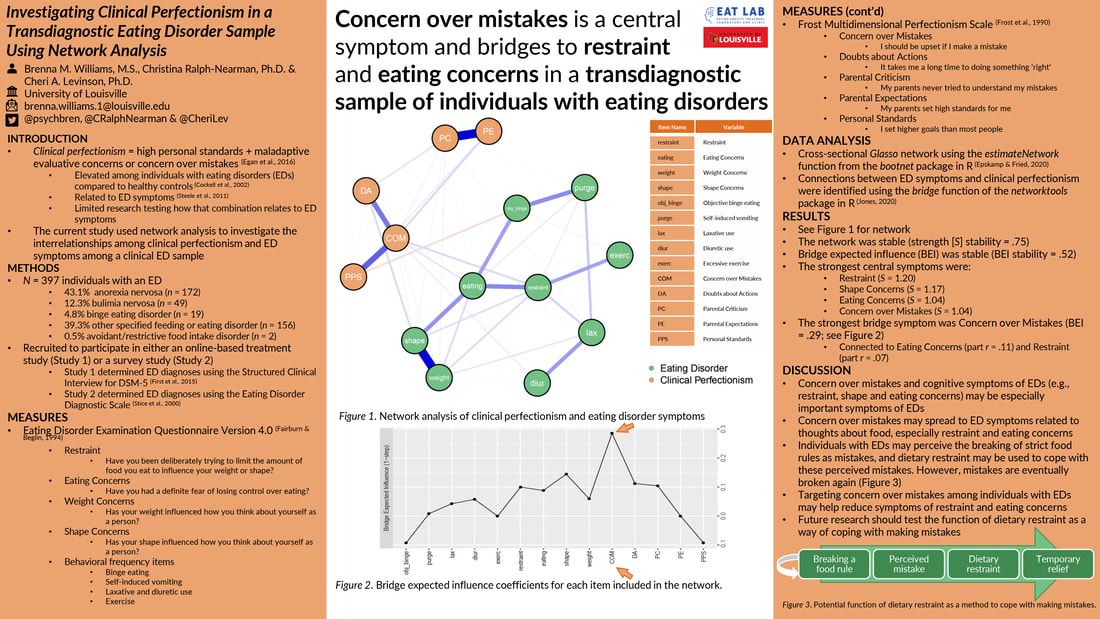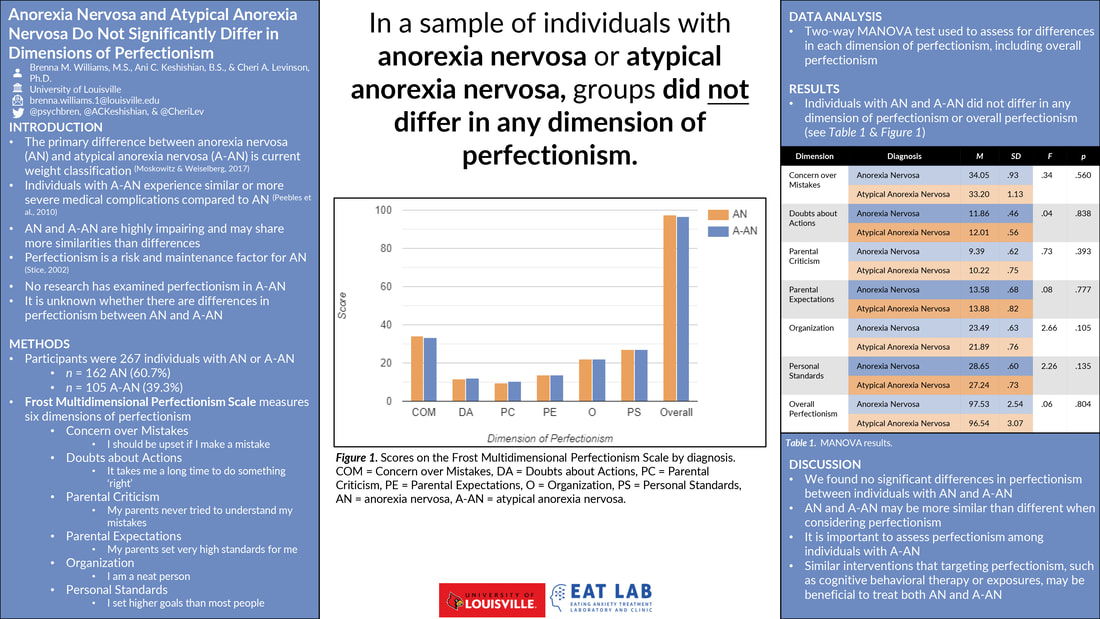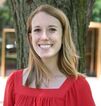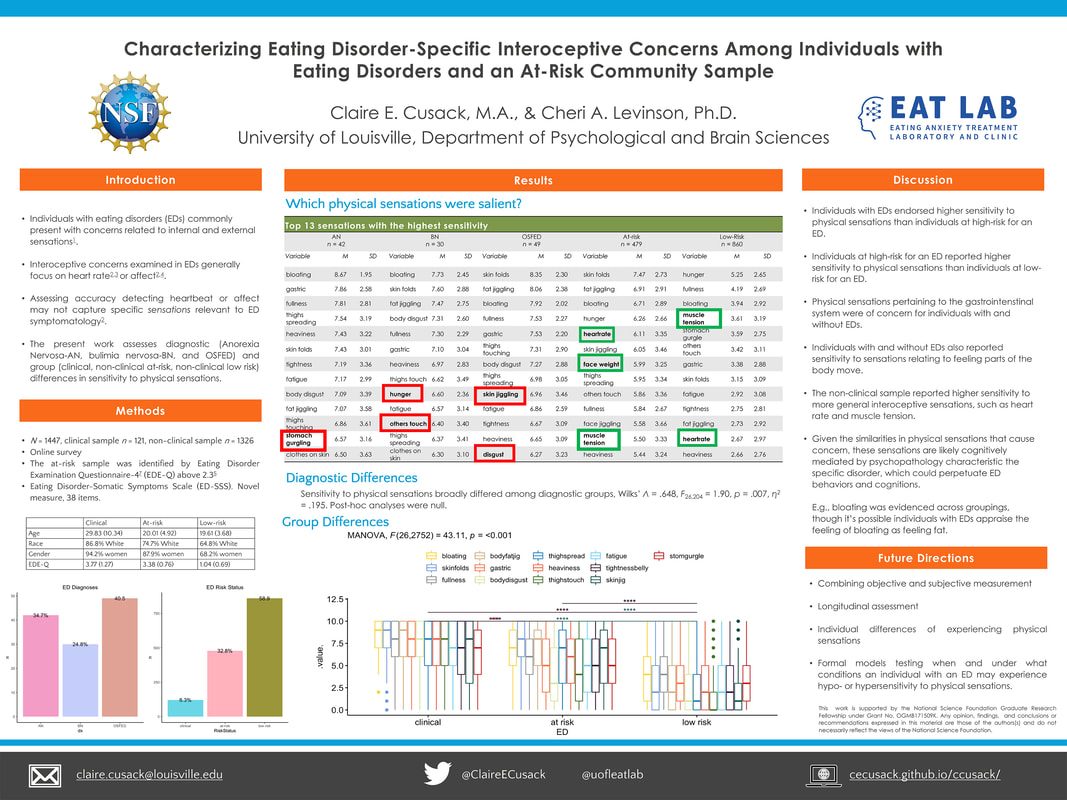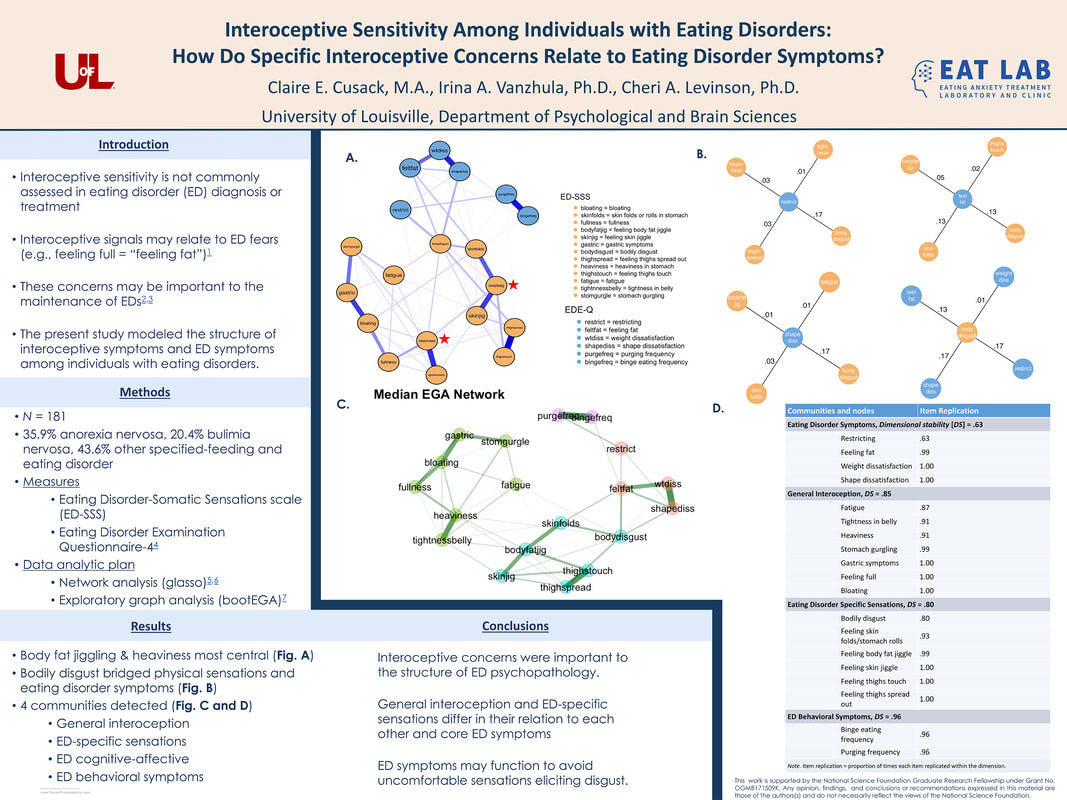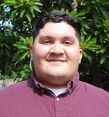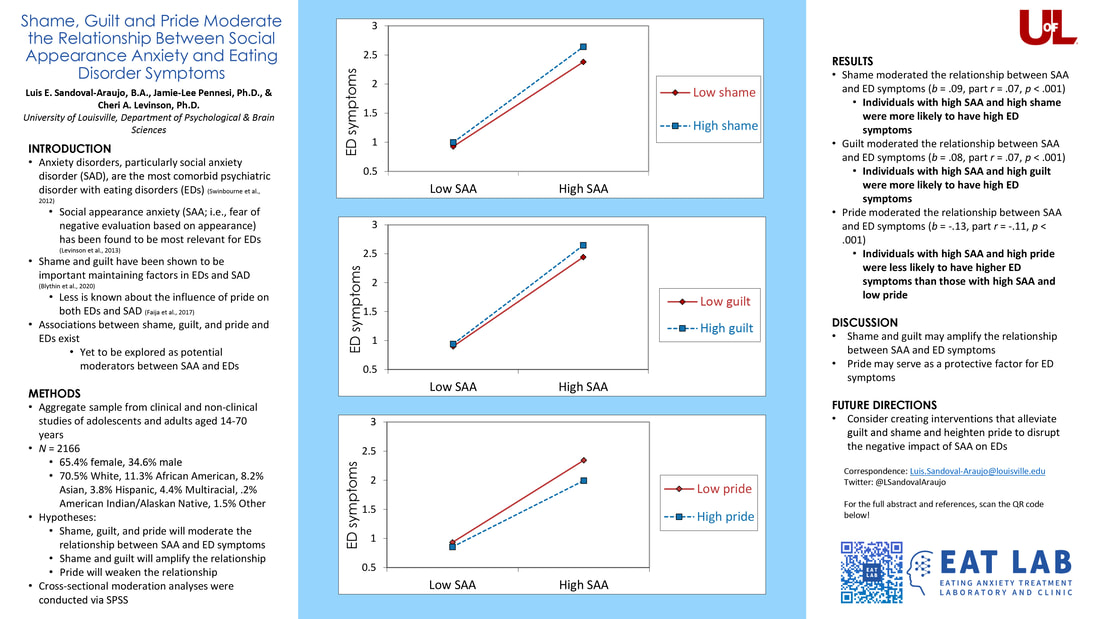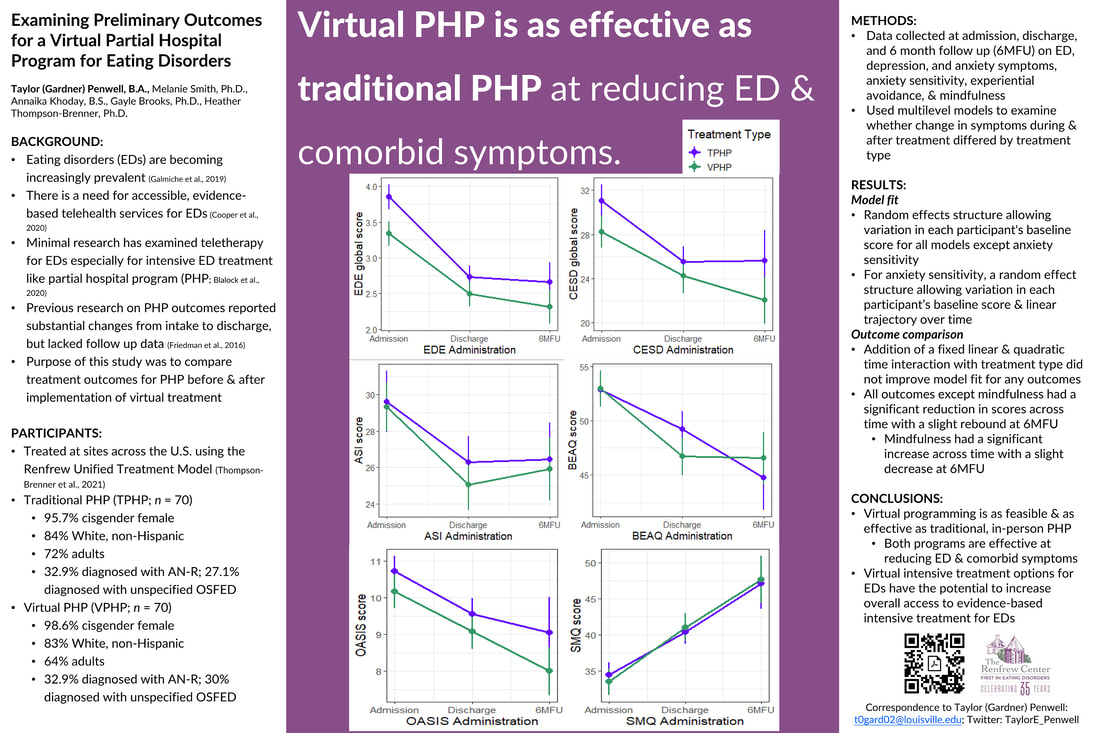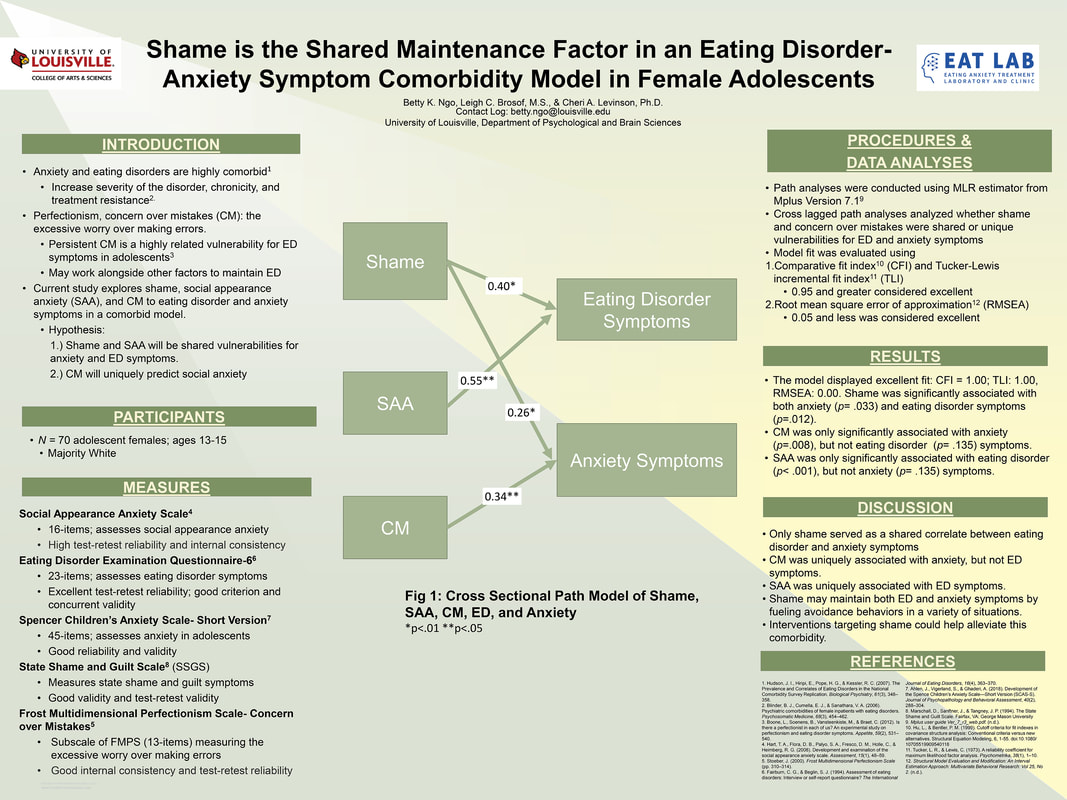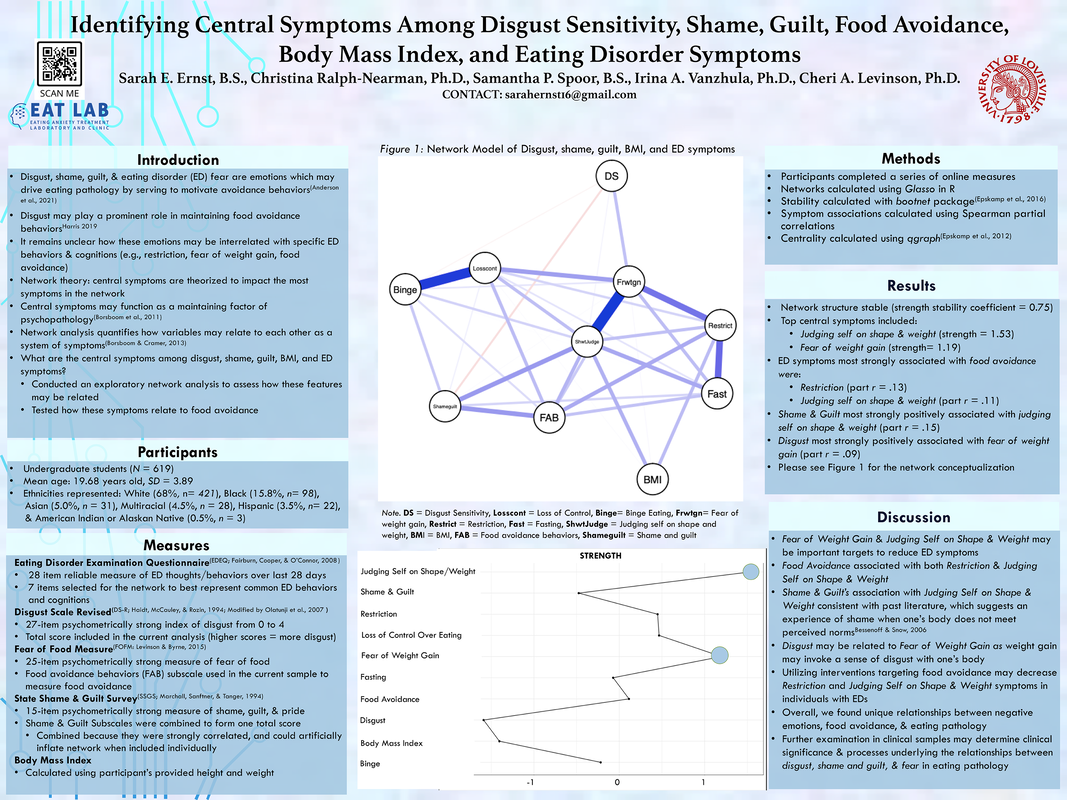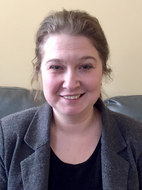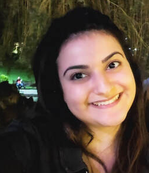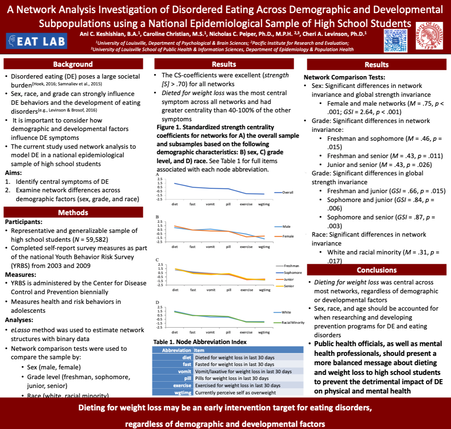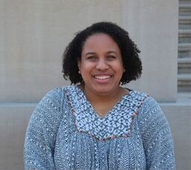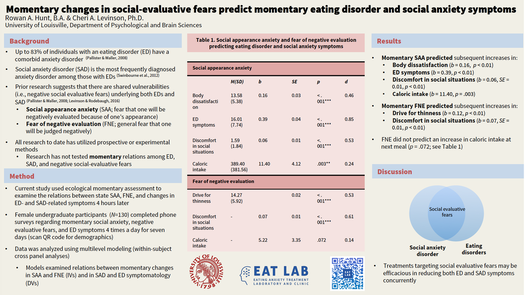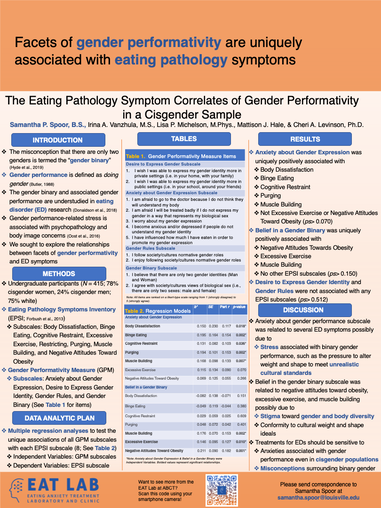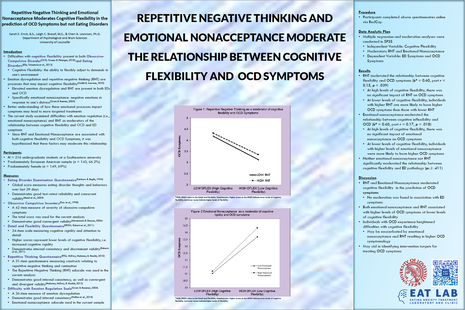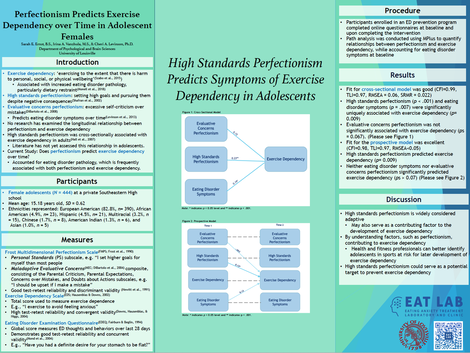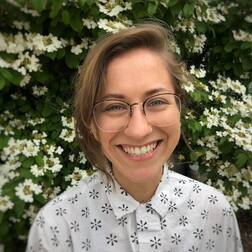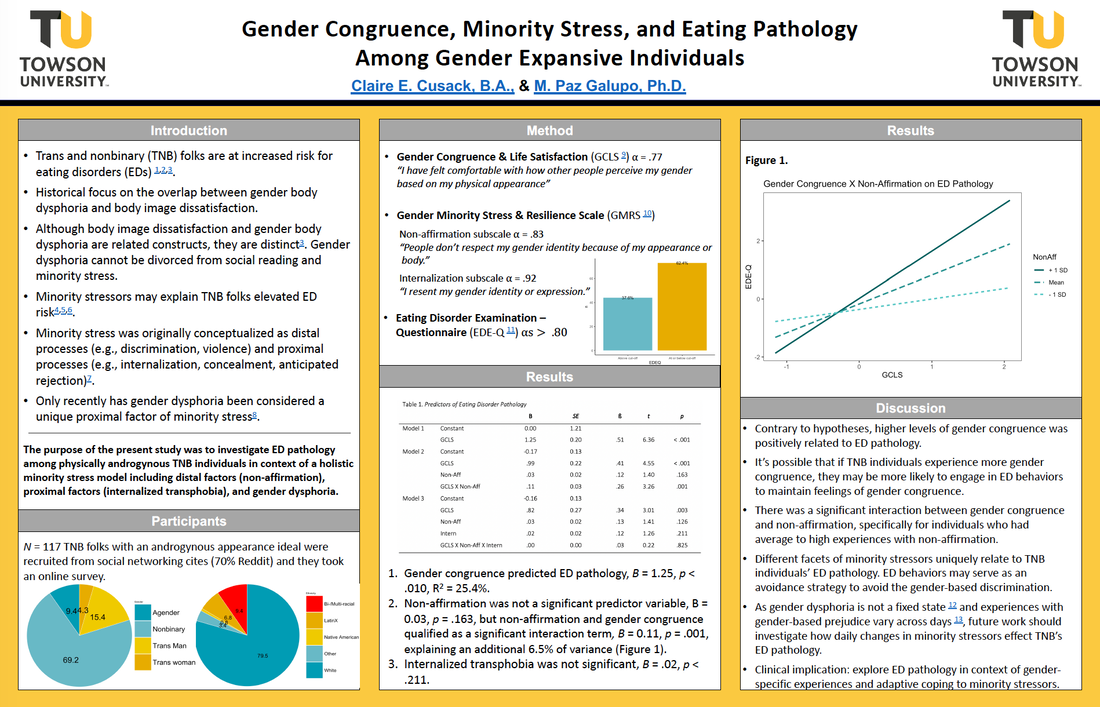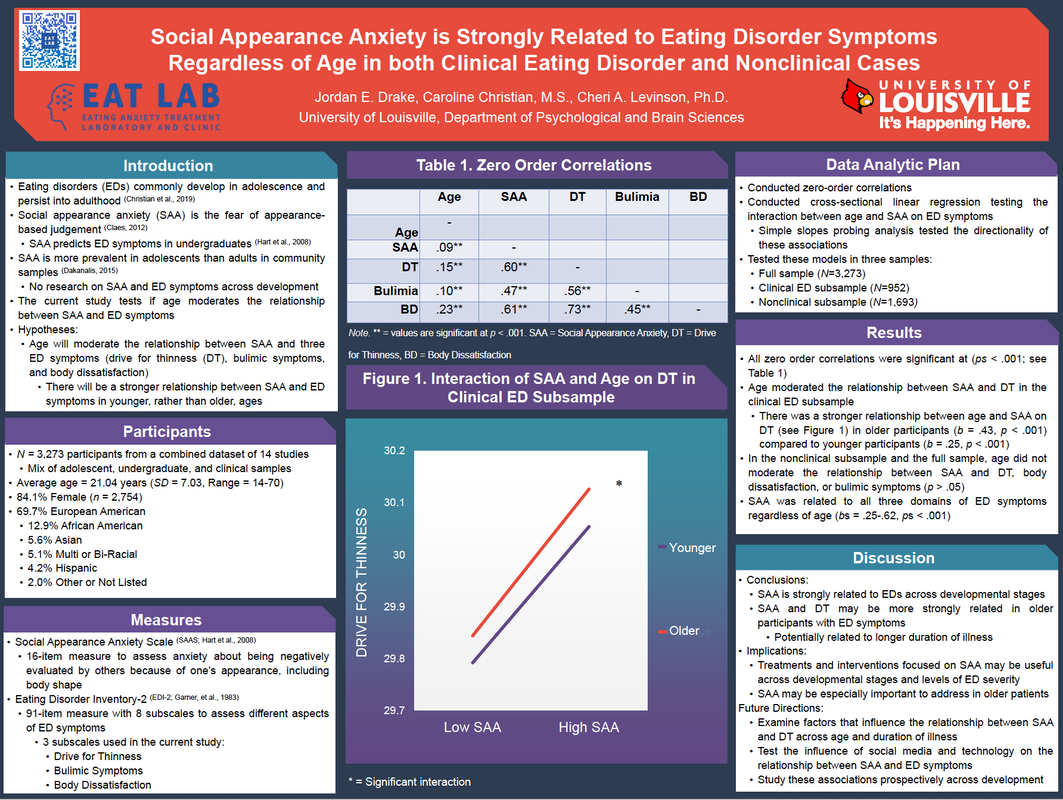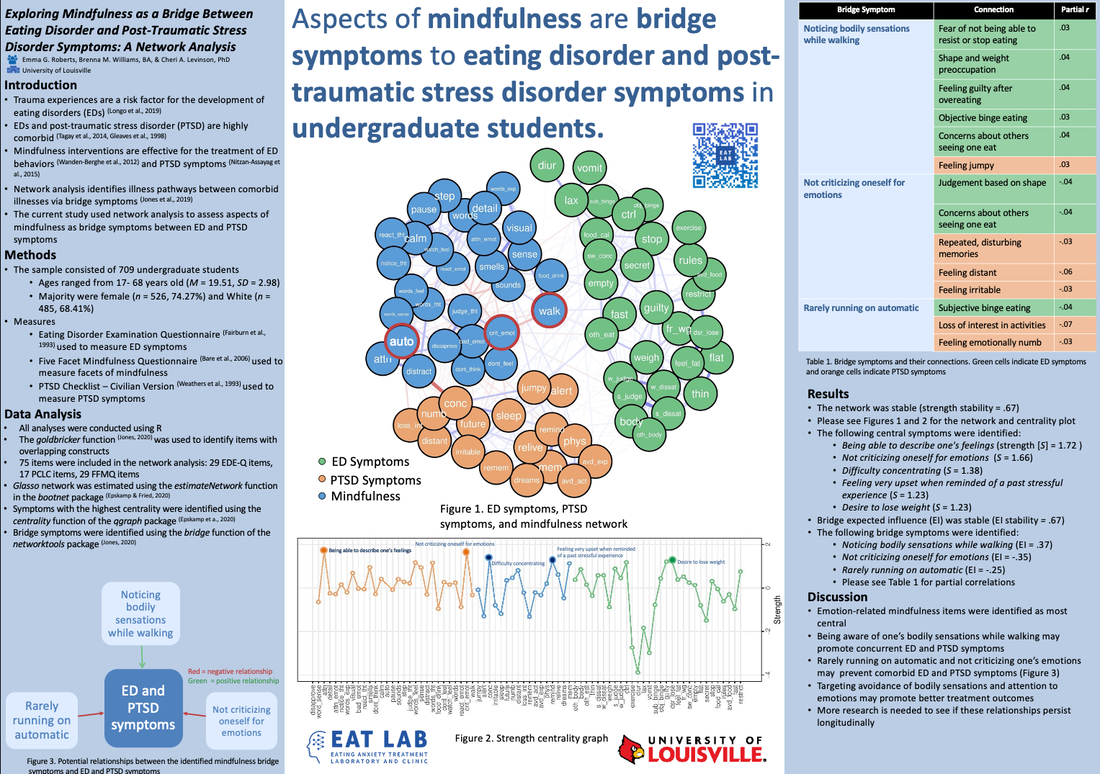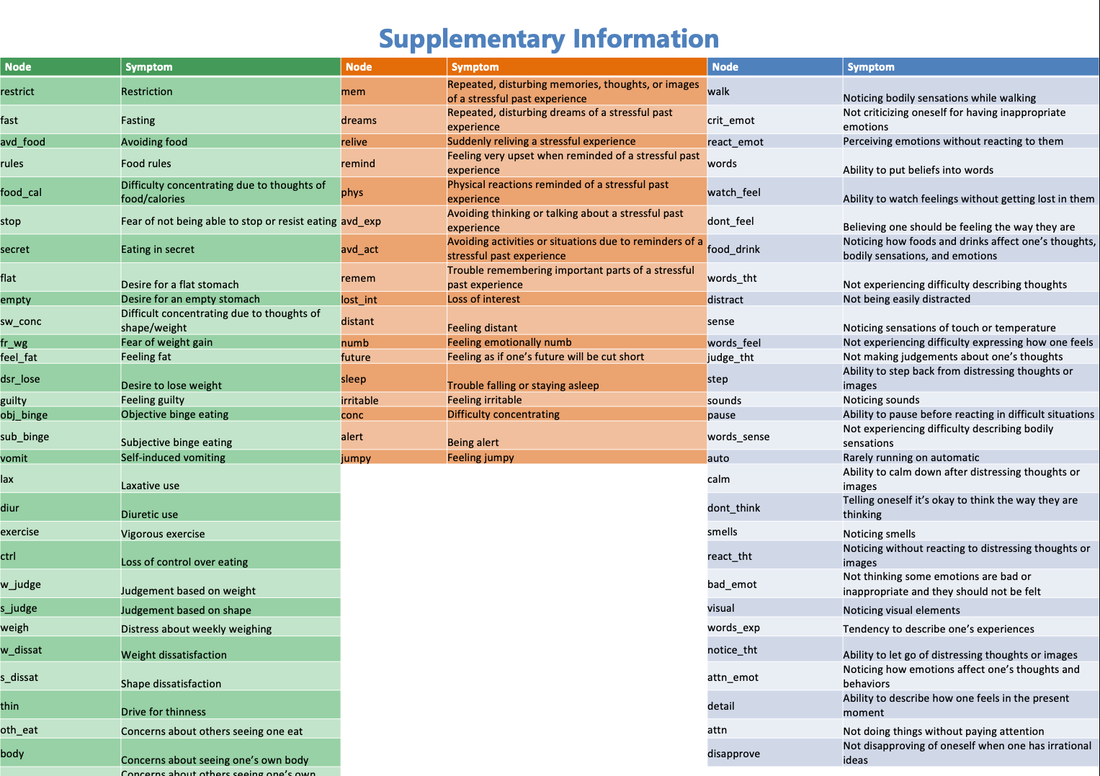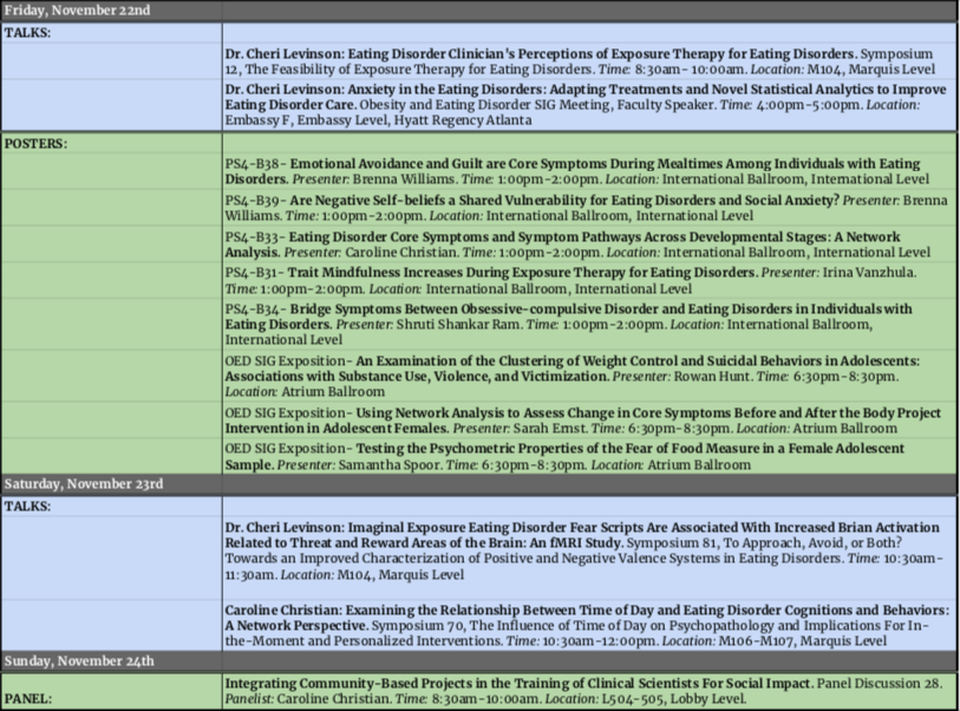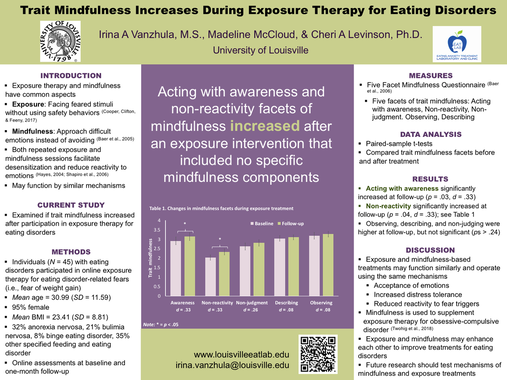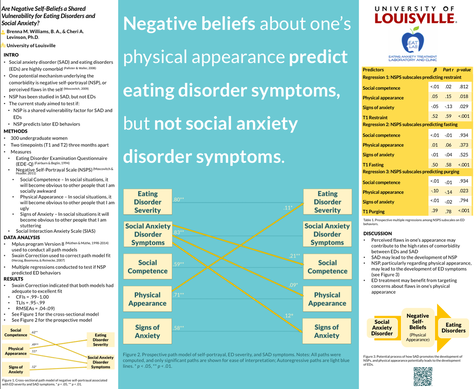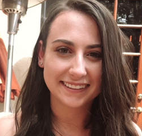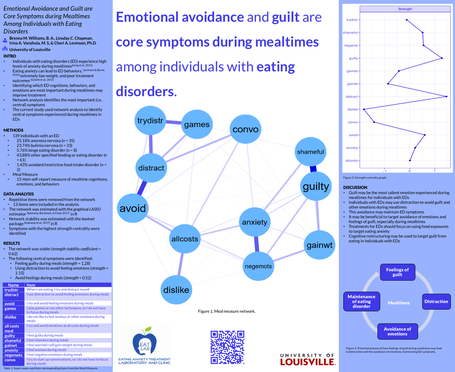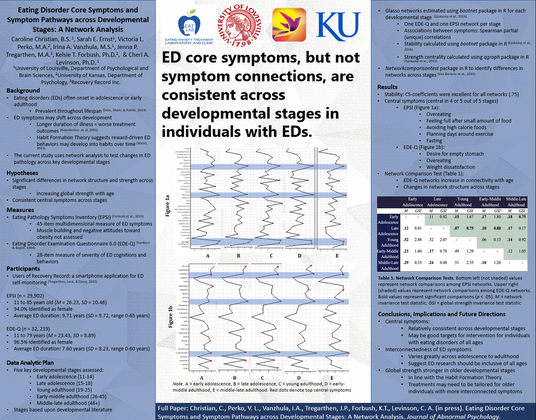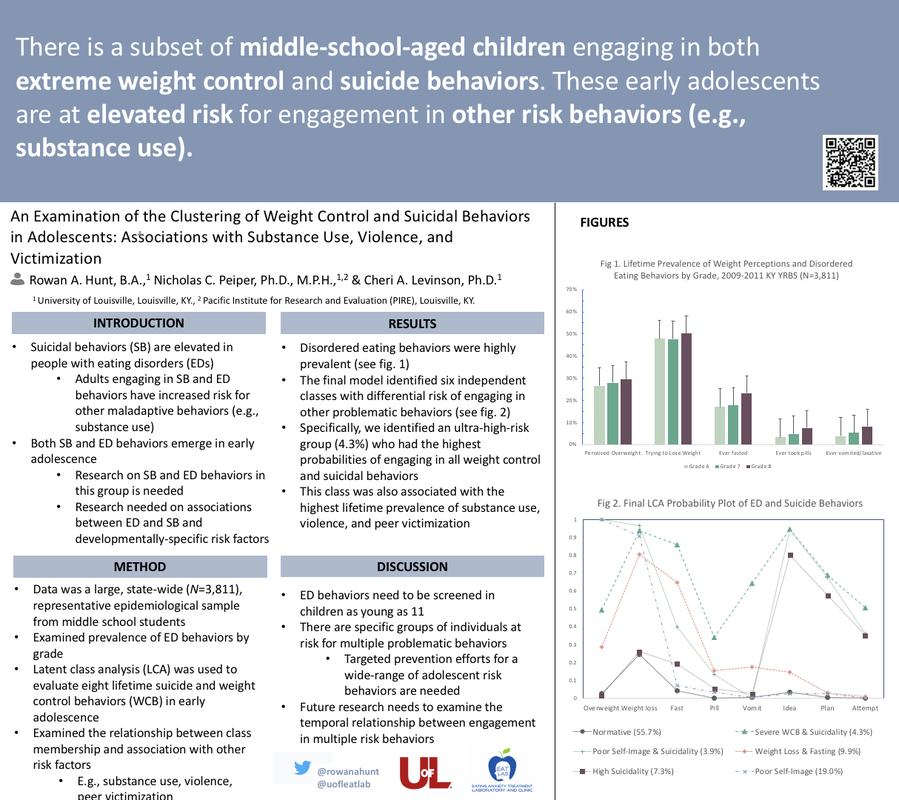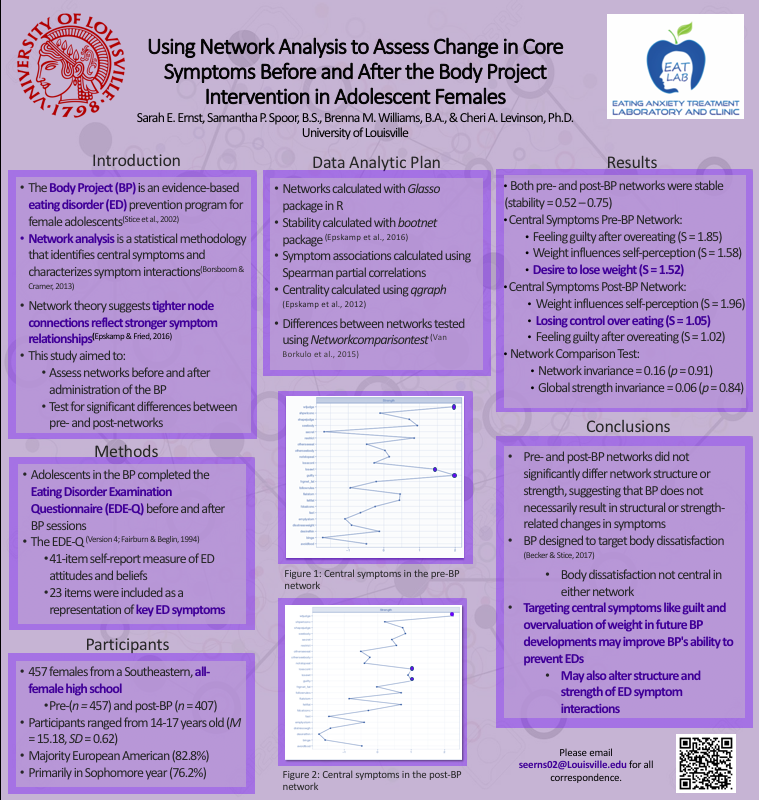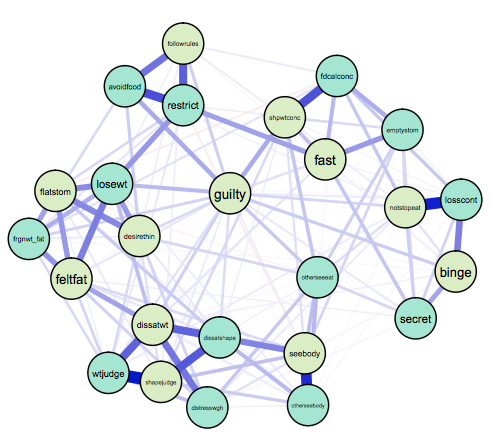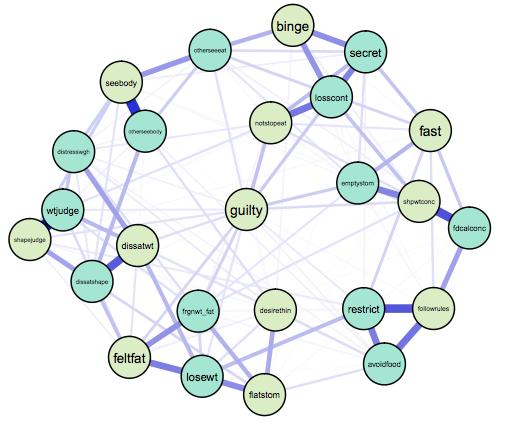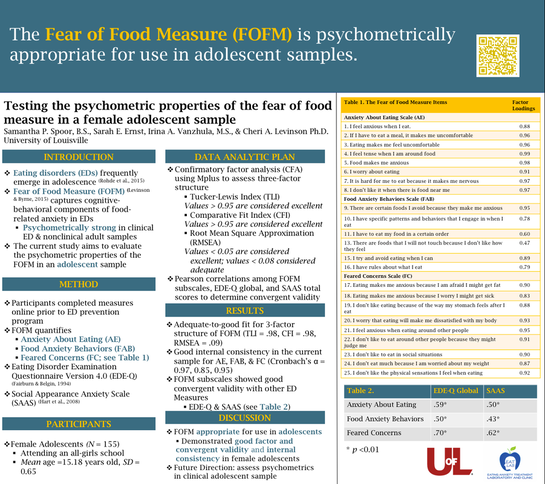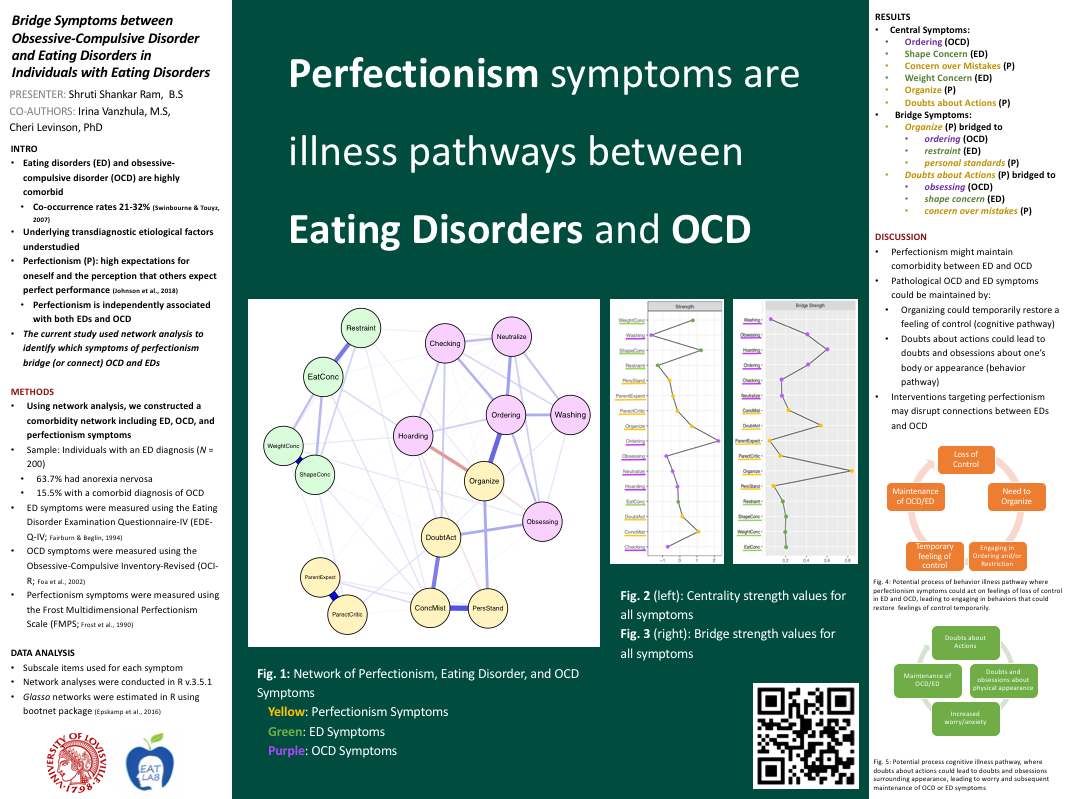Welcome to the EAT Lab's ABCT conference page! You may scan QR codes on any poster or talk from the EAT Lab to get directed to this page. To see our work from previous years at ABCT, scroll down! Our ABCT 2023 content is now being updated on a regular basis leading up to the conference.
For live updates, follow @uofleatlab on Twitter!
For live updates, follow @uofleatlab on Twitter!
ABCT 2022
REFERENCES:
1. Walsh, B. T., Xu, T., Wang, Y., Attia, E., & Kaplan, A. S. (2021). Time course of relapse following acute treatment for anorexia nervosa. American Journal of Psychiatry, 178(9), 848–853. https://doi.org/10.1176/appi.ajp.2021.21010026
2. Levinson, C. A., Hunt, R. A., Christian, C., Williams, B. M., Keshishian, A. C., Vanzhula, I. A., & Ralph-Nearman, C. (2022). Longitudinal group and individual networks of eating disorder symptoms in individuals diagnosed with an eating disorder. Journal of Psychopathology and Clinical Science, 131(1), 58–72. https://doi.org/10.1037/abn0000727
3. Goodwin, M. S., Mazefsky, C. A., Ioannidis, S., Erdogmus, D., & Siegel, M. (2019). Predicting aggression to others in youth with autism using a wearable biosensor. Autism Research, 12(8), 1286–1296. https://doi.org/10.1002/aur.2151
4. Welch, K., Pennington, R., Vanaparthy, S., Do, H., Narayanan, R., Popa, D., Barnes, G., & Kuravackel, G. (2022). Using physiological signals and machine learning algorithms to measure attentiveness during robot-assisted social skills intervention: A case study of two children with autism spectrum disorder. IEEE Instrumentation & Measurement Magazine.
5. Stone, A. A., & Shiffman, S. (1994). Ecological momentary assessment (EMA) in behavorial medicine. Annals of Behavioral Medicine, 16(3), 199–202. https://doi.org/10.1093/abm/16.3.199
1. Walsh, B. T., Xu, T., Wang, Y., Attia, E., & Kaplan, A. S. (2021). Time course of relapse following acute treatment for anorexia nervosa. American Journal of Psychiatry, 178(9), 848–853. https://doi.org/10.1176/appi.ajp.2021.21010026
2. Levinson, C. A., Hunt, R. A., Christian, C., Williams, B. M., Keshishian, A. C., Vanzhula, I. A., & Ralph-Nearman, C. (2022). Longitudinal group and individual networks of eating disorder symptoms in individuals diagnosed with an eating disorder. Journal of Psychopathology and Clinical Science, 131(1), 58–72. https://doi.org/10.1037/abn0000727
3. Goodwin, M. S., Mazefsky, C. A., Ioannidis, S., Erdogmus, D., & Siegel, M. (2019). Predicting aggression to others in youth with autism using a wearable biosensor. Autism Research, 12(8), 1286–1296. https://doi.org/10.1002/aur.2151
4. Welch, K., Pennington, R., Vanaparthy, S., Do, H., Narayanan, R., Popa, D., Barnes, G., & Kuravackel, G. (2022). Using physiological signals and machine learning algorithms to measure attentiveness during robot-assisted social skills intervention: A case study of two children with autism spectrum disorder. IEEE Instrumentation & Measurement Magazine.
5. Stone, A. A., & Shiffman, S. (1994). Ecological momentary assessment (EMA) in behavorial medicine. Annals of Behavioral Medicine, 16(3), 199–202. https://doi.org/10.1093/abm/16.3.199
EAT Lab @ ABCT 2020 Schedule:
| abct_eat_talks_2020.pdf | |
| File Size: | 552 kb |
| File Type: | |
EAT Lab at ABCT 2019 Schedule:
Keep Scrolling for more information about talks, posters, & presenters!
|
Full Cite: Levinson, C. A., Christian, C., & Vanzhula, I. A. (2019). Manipulating the theoretical framing of exposure therapy for eating disorders impacts clinicians’ treatment preferences. Eating and Weight Disorders-Studies on Anorexia, Bulimia and Obesity, 1-8. Full Paper Below (click to download):
|
| ||||||
|
|
Follow Dr. Levinson on Twitter: @CheriLev Follow the EAT Lab on Twitter: @uofleatlab |

Presenter: Caroline Christian, B.S. Second Year Graduate Student Caroline is interested in applying technology and advanced statistical methods to studying and treating eating disorders. For all correspondence, please email Caroline at caroline.christian@louisville.edu Twitter: @cbchri02 See below for the full text papers on 1) implementing an eating disorder prevention program in Southern, all-female high schools and 2) eating disorder age networks.
| |||||||||||||
|
|
|
